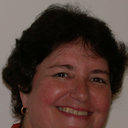Cutaneous infections in the mature patient.
Palabras clave
Abstracto
Dermatologists must be familiar with the peculiarities of the micro-organisms that may affect the elderly, in order to optimize the diagnosis and treatment of infections, which may affect their skin, especially because the world population is rapidly aging. It is estimated that there will be 434 million individuals over 80 years of age in 2050. Since the elderly population is rapidly increasing and their infections are usually more severe and different from those observed in younger adults, it leads to a statistical increase of the rates regarding hospitalization and mortality caused by infectious diseases among people over 85 years. Other health issues may be involved in the older population. These include nutritional alterations, as malnutrition or obesity, which can aggravate the infections. Also the usual signs and symptoms of infection are subtle or uncharacteristic in elderly patients, and frequently, they are unable to report their symptoms, which can delay the diagnosis. Among the many infections that may affect the elderly we reviewed the most frequent and those that are different in this age group, as herpes zoster, cytomegalovirus, herpes simplex, bacterial skin infections, erysipelas, celullitis, impetigo, folliculitis, furunculosis and carbunculosis, secondary infections, intertrigo (body folds), fungal infection, and scabies.


